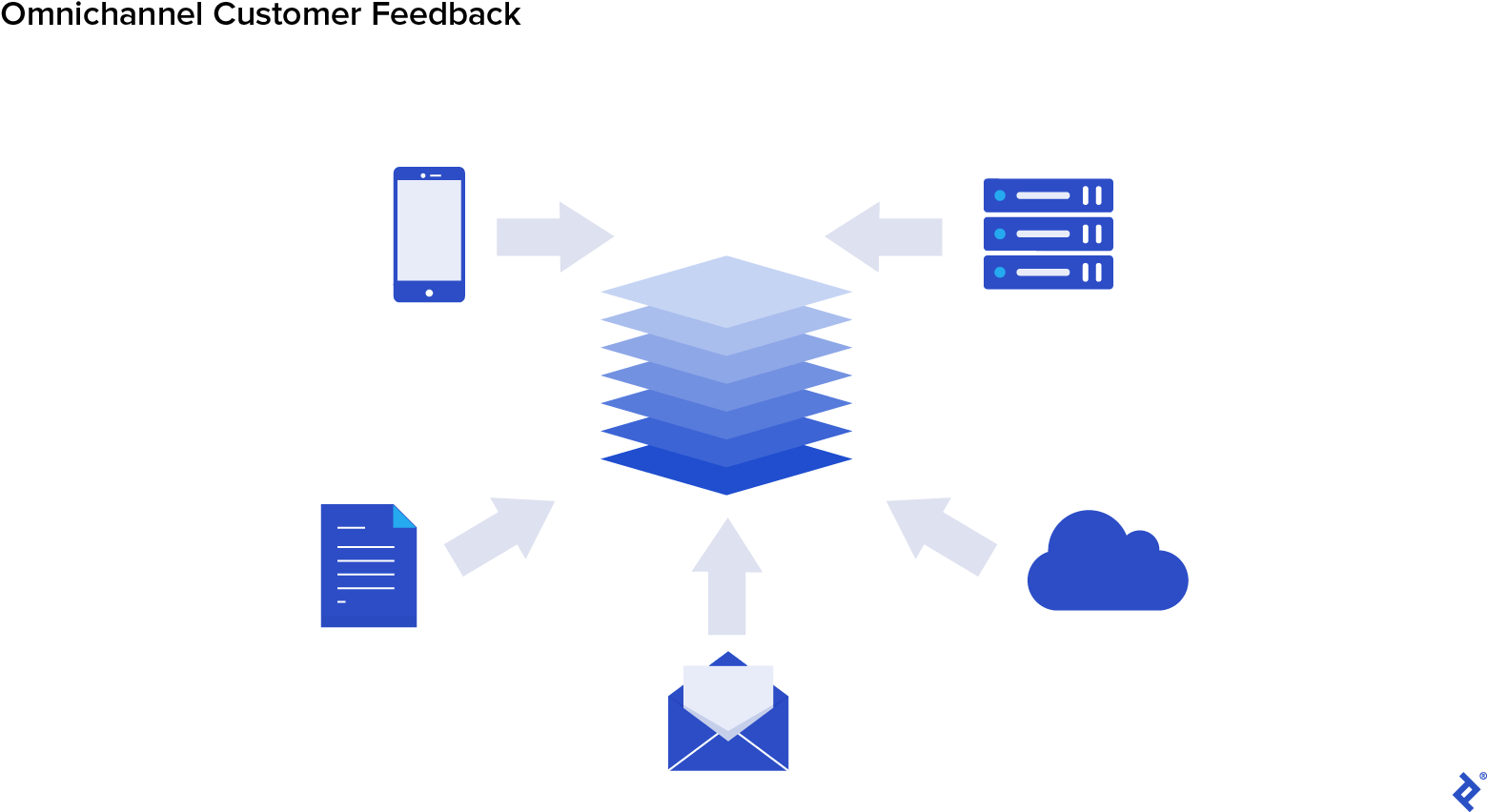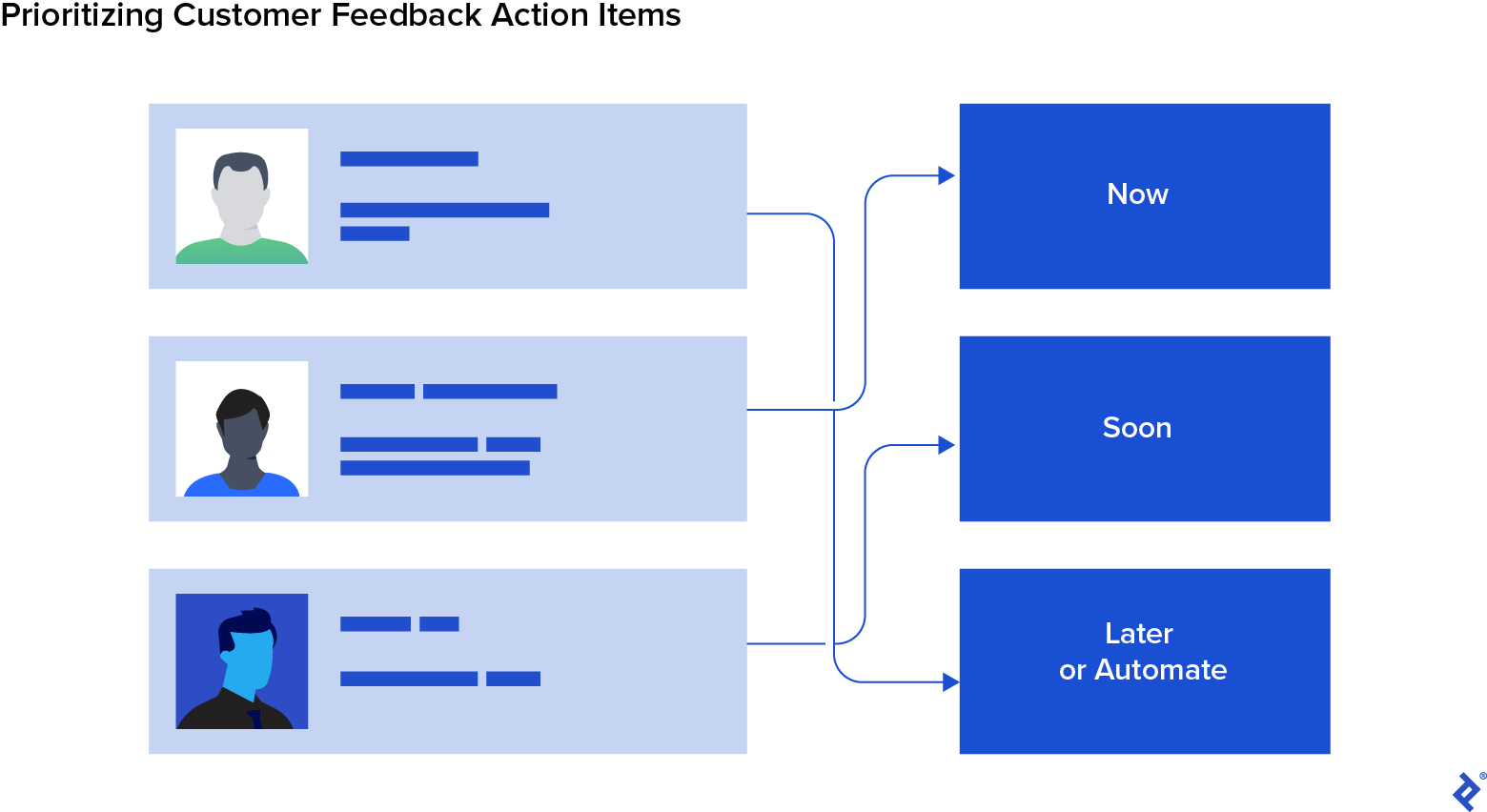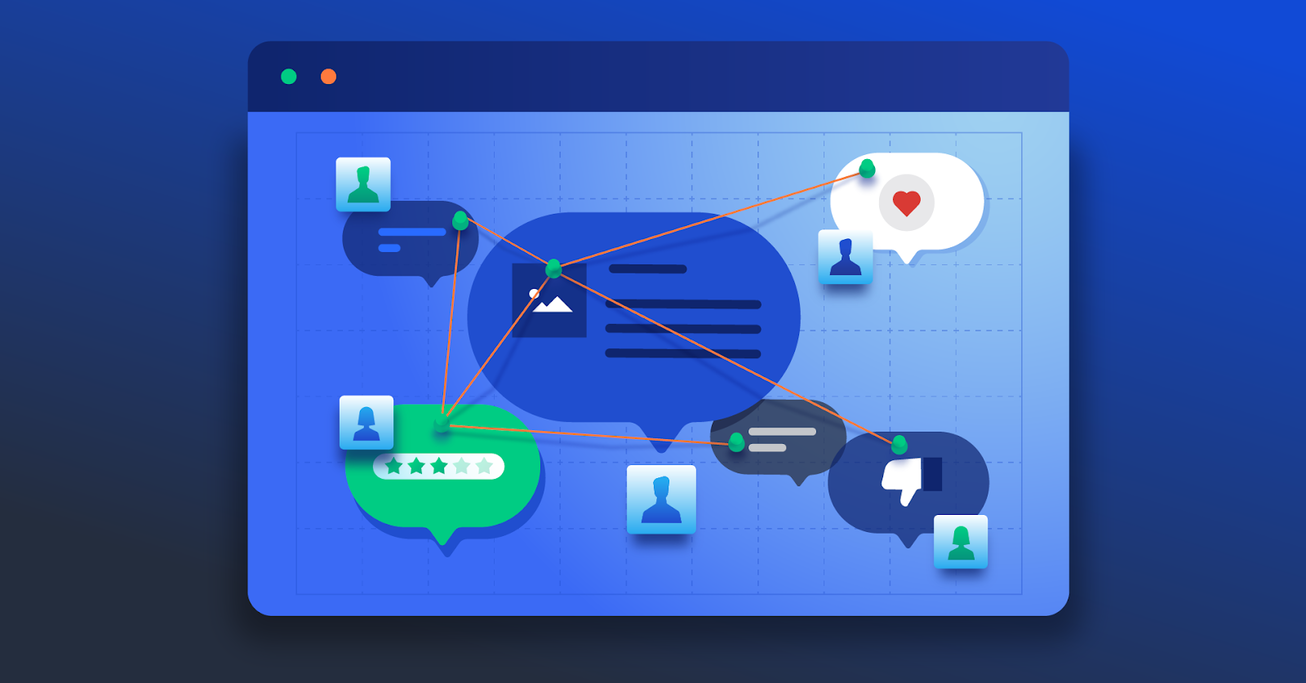Voice of the Customer: How to Leverage User Insights for Better UX
Gather, analyze, and prioritize the voice of the customer to unlock product design solutions that improve client satisfaction and boost revenue.
Gather, analyze, and prioritize the voice of the customer to unlock product design solutions that improve client satisfaction and boost revenue.
Atishay is a product designer and UX expert who has worked in close collaboration with McKinsey & Company and Boston Consulting Group on B2B and B2C products for a wide range of industries. He is the head of product design at Agility Group and was recognized as one of India’s top designers of 2023 by Siliconindia.
Expertise
Previous Role
Senior UX DesignerPREVIOUSLY AT

Many of us have had the experience of feeling like we’re shouting into an online void, and even for the most stoic among us, it’s aggravating. Will that contact submission form ever reach a real human? Why is it taking me so long to complete this checkout process? These all-too-familiar experiences are often symptomatic of a product team’s failure to listen to “the voice of the customer” (VoC).
The selections or swipes a user makes on a website or app, the complaints a customer shares with a customer service agent, and the reviews a user leaves on Google, Yelp, or Trustpilot are all breadcrumbs that show designers where customers are running into problems and provide clues for creating better digital products and services.
Research is relatively conclusive on the business value of measuring customer feedback. In 2022, Deloitte reported that companies that collect and implement customer feedback have higher customer satisfaction ratings than companies that do not. What’s more, failing to listen to the voice of the customer poses significant risks. When Apple replaced Google Maps with its own mapping application on iOS devices in 2012, it faced widespread criticism for inaccuracies, missing features, and poor usability. Apple had not gathered sufficient user feedback or conducted thorough testing before launching the product, and it suffered the consequences.
I’m the head of product design at global digital supply-chain company Agility Group, and five years ago, I introduced the GAP (gather, analyze, prioritize) method to improve the customer experience for the company’s digital products and services. Gaining a better understanding of our customers’ behavior and preferences and working to increase their trust through the GAP method not only led to happier users but actually increased conversions by 400%.
So what does the GAP method entail? How can designers use this voice of the customer strategy to improve the user experience of their digital products? Here’s a closer look.
The GAP Method: An Effective VoC Strategy
A successful VoC strategy requires a reliable customer feedback loop to continuously enhance and improve a product based on user reviews, opinions, and suggestions. While many companies use one voice of the customer technique or another, they often do so without the right tools or sufficient support staff, and they then fail to close the customer feedback loop. Maybe the customer feedback isn’t evaluated and converted into actionable business recommendations or used to inform new product features and updates. Perhaps meaningful feedback appears in sales and marketing emails or product reviews, but there is no dedicated person or AI agent to parse it all, so it gets pushed aside or forgotten.
While there is no cure-all to such persistent issues, the GAP method offers a straightforward approach to ensuring the essentials of the customer feedback loop aren’t overlooked.
Step 1: Gather Feedback From Multiple Channels
As with any VoC strategy, the first step with the GAP method is to gather customer insights. What sets the GAP method apart from other voice of the customer techniques is gathering feedback from multiple sources. This omnichannel approach to customer feedback gives designers a more complete view of the customer’s journey rather than limiting insights to those from individual touch points.
In my experience, there are three key areas to search for customer insights: the company’s information channels, public communication forums, and the product itself.

The first place to look for VoC data is within the preserved information channels of your sales, marketing, and customer success teams. Cloud-recorded phone calls, email chains, and customer resource management databases like Salesforce offer rich insights into customer attitudes and behaviors. These records can reveal purchase histories, requests for bug fixes, and feature upgrades—all clues as to why ambivalent or dissatisfied users have abandoned your product or failed to register for paid services. Because frontline agents field customer queries and complaints and hear about product deficiencies and strengths directly from users, they are often one of the best sources of qualitative product data. Operations data from ticket management systems, live chat queries, courier services, and chatbot hosting services like Intercom can also offer rich data stores.
Public communication forums are another great source of VoC feedback. Even if product reviews and comment threads aren’t always encouraging to read, sites like Yelp and Trustpilot and social media posts provide an unvarnished view of your customers’ feelings about your product. Apps like Hootsuite and Sprout Social can visualize this data in a single place and extract meaningful trends and patterns. Data visualization tools such as Tableau and ChartBlocks can create visual representations of large data sets. If you have the time and budget for user testing, setting up phone calls or videoconferences with five to six recruited customers representing different user personas and geographies can lead to an even deeper understanding of your customers and help validate perceived user needs and design requirements.
Finally, VoC data can be gathered from the product itself. Customer behavior tools like Hotjar, Crazy Egg, VWO, and Microsoft Clarity, which record users’ cursor movements, selection choices, and time spent on particular pages, can reveal usability hiccups that interfere with engagement or conversion. These tools can help you answer such questions as: Are customers getting blocked from signing up for an account? Are they struggling to navigate menu choices? Are they getting derailed while trying to place an order? (Before trying these tools, it’s crucial to let users know they are being monitored and ensure your products’ privacy policies and terms of use align with GDPR and CCPA standards.)
Moreover, these tools can help you measure important customer loyalty and satisfaction metrics, such as the net promoter score. An NPS survey sent via email or embedded in your product asks, “On a scale of 0 to 10, how likely is it that you would recommend this product/company to a friend or colleague?” Calculating the score with a simple formula and comparing it to industry averages gives you a good sense of how your product stacks up against the competition.
Step 2: Analyze Your VoC Data
The next step is to analyze your data to draw out and understand the opinions and feelings of your customers. Based on the volume of feedback, you may decide to sort manually or with the help of a sentiment analysis tool such as Amazon Comprehend, Google Cloud Natural Language API, or IBM Watson, which are often used by larger companies that need to process data at scale. These tools use natural language processing to glean positive and negative sentiments from customer correspondence such as calls, emails, and social posts. For midsize and small businesses or startups, I often recommend a less expensive and easy-to-use tool like MonkeyLearn—in my opinion, it’s one of the better tools available
However you decide to analyze your data, you first need to group it into buckets. These buckets or categories might be based on geography (are shipments getting lost in Dubai or Los Angeles?), customer type (B2B or B2C), or established personas (importers, exporters, household shippers, relocation agents). Whatever categories you decide are most germane to your product and business, it’s important to define them carefully, as drawing overly broad conclusions from customer feedback can lead to trying to fix problems that only apply to a narrow subset of your audience and could make your voice of the customer process unnecessarily costly and time-consuming.
Once you’ve accurately defined your categories, the next step is to identify recurring themes you’d like to monitor more closely. Common themes include pricing, usability, branding, and shipment tracking. A high-level product lead or design manager with a bird’s-eye view across all data sources should define targets for data collection for a set time, typically about three months, to get a sense of emerging patterns. For instance, the product lead might review five call scripts and 10 emails from the sales team each month.
Step 3: Prioritize Features and Product Updates
Not all customer feedback will be equally critical. To focus your resources on the right features or software updates, you’ll need to prioritize your GAP action items based on their potential impact on customer satisfaction and the effort required for implementation. One way to do this is to create a shared strategy document in a collaborative mapping tool such as Figma or Mural. This document should rank focus areas by their frequency and signal strength, summarize customer insights, and highlight key quotes that capture the raw feelings of your customers.
Word maps and visualizations that separate positive and negative feedback in a binary way are also valuable for prioritizing where action is needed. Productivity management tools like Zenhub for GitHub are also great for unblocking and organizing your design backlog. For instance, you can highlight important or time-sensitive action items by setting a high-priority status. Small teams or those new to a voice of the customer strategy might find it easier to focus on just one item at a time.

When making changes to a design, it’s essential to set a key performance indicator (KPI)—a time-bound, quantifiable measure of progress—to ensure the actions you take result in the desired outcomes. Assigning the KPI to a dedicated owner who can track progress month to month helps ensure accountability. Let’s say you change the layout of a check-out screen to make it more obvious to customers where they can update their shipping address. Did the change lead to any measurable difference in click-through or conversion rates? KPIs will help you test if your responses to customer data are correct and provide a clear line of accountability as decisions get made.
How Listening to Customers Boosts Conversion
So what does it look like when all these steps are successfully implemented?
Recently, I spearheaded a VoC program using the GAP method for an Agility Group client, a digital supply-chain company specializing in international freight logistics (think Booking.com but for high-value commercial goods). The company’s core users are importers, exporters, household shippers, and relocation agents who use the service to deliver goods internationally. Gaining a better understanding of our customers’ purchase habits and working to cultivate their loyalty were integral to the program, which, over three months, yielded a surge in booking conversions from 0.08 to 0.4%—that’s a 400% increase in the number of users who progressed from a quote to a confirmed booking.
This VoC program was initiated because the company recognized a leak in its conversion funnel. Prospective customers visiting the company’s website were obtaining quotes but dropping off before booking. One of our initial assumptions was that shipping costs were too high, but we had no data to back this up. This is where we implemented step 1 of the GAP method: gathering feedback. We sent an in-product survey to customers who had received quotes, and to our surprise, 53% found the prices reasonable. Still, only 4% of those 53% were completing bookings. We wanted to understand why. So we asked our customer support and sales teams to begin following up with customers. Over a month, we collected data from conversations with 30 customers from each country we operate in.
Next, we implemented step 2: analyzing the data. Transcripts from these conversations revealed that the bounce rate had more to do with the speed of the decision-making within the shipping industry than the service price. Our teams learned that in the shipping industry, it’s not uncommon for customers to spend a month researching and price hunting before booking. This discovery led us to adapt our lead qualification process so that customers who had requested quotes were sent automated reminder emails and put on a call schedule with sales agents who would check in weeks later.
Another insight our VoC data revealed was a widespread lack of trust in the booking process. This had less to do with the business’s reputation or the website’s usability than with the risk customers took when booking their shipments online. Bookings cost upwards of $3,000, and paying these fees upfront was just too big a gamble for many clients. Further conversations revealed that simple changes to the website could help alleviate these concerns. For example, the booking call-to-action button copy was changed from “Book Now” to “Continue,” removing the sense of urgency and apprehension about what comes next. This small change had a big impact on users—contributing to an increase in conversion by 4 percentage points.
And finally, we implemented step 3: prioritizing features and updates. On the content side, we reinforced our unique selling proposition on the ordering page whereas before it was lacking. The new messaging showed that the company had a physical presence with 500 offices in more than 100 countries. It assured customers they would not be billed again after their initial payment and let them know they had access to live 24/7 chat support.
On the design side, we made it easier to complete bookings by adding new payment options. New fields and checkbox options let customers hold payment until couriers picked up goods, provided financing and credit options for those unable to pay in full, and integrated additional online payment services such as PayPal, which vary in use rates by locale.
In short, we listened to the voices of our customers and gave them what they were asking for. They responded in turn, with higher booking rates, a strong signal that they appreciated being heard. These engaged customers are now an ongoing resource, allowing us to initiate additional feedback loops.
The GAP Method: A VoC Strategy That Closes the Customer Feedback Loop
Listening to your customers, valuing what they say, and responding to their needs is almost universally accepted as sound business behavior. The hard part, though, is following your customers’ voices across a vast digital ecosystem in which they surface on multiple channels, reach different internal departments, and are often addressed informally or haphazardly. When customer complaints are ignored, dismissed, or incorrectly documented, corrective action is harder to implement.
Many companies attempt to use VoC techniques to drive their business forward but ultimately fail due to a lack of resources or knowledge. The GAP method ties up loose ends by formalizing a process for collecting and evaluating customer information as it reaches employees or online venues, thus ensuring a constant customer feedback loop. Give it a try and see how this voice of the customer strategy can help you boost customer satisfaction, acquisition, retention, and conversion.
Further Reading on the Toptal Blog:
Understanding the basics
What is the voice of the customer?
A voice of the customer (VoC) methodology captures user needs, preferences, and feedback. Gathering and analyzing feedback through surveys, interviews, and social media monitoring reveals insights that businesses can use to enhance their products, meet customer expectations, and improve the overall user experience.
What is the difference between VoB and VoC?
VoB (voice of the business) focuses internally on the organization, including its goals, strategies, and operations. In contrast, voice of the customer captures user needs, feedback, and opinions to inform product decisions and improve experiences.
What are voice of the customer strategies?
A voice of the customer strategy is a detailed plan for gathering, analyzing, and leveraging customer feedback to make informed decisions and drive continuous improvement. A key component of voice of the customer strategies is data collection, which can be done through a number of channels, including online reviews, focus groups, and community forums.
Dubai, United Arab Emirates
Member since July 27, 2021
About the author
Atishay is a product designer and UX expert who has worked in close collaboration with McKinsey & Company and Boston Consulting Group on B2B and B2C products for a wide range of industries. He is the head of product design at Agility Group and was recognized as one of India’s top designers of 2023 by Siliconindia.
Expertise
Previous Role
Senior UX DesignerPREVIOUSLY AT


